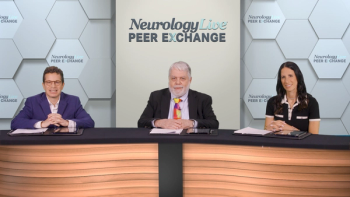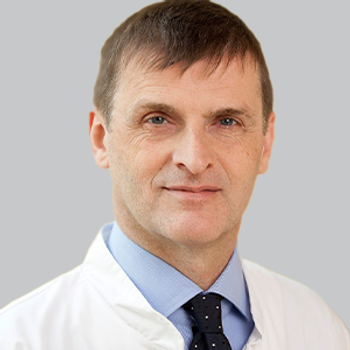
Idiopathic REM Sleep Behavior Disorder Distinct From Narcolepsy-Associated Pathophysiology
New study findings confirm that idiopathic rapid‐eye‐movements sleep behavior disorder and RBD secondary to narcolepsy type 1 can be identified via video‐polysomnography and skin biopsy for phosphorylated α‐synuclein deposits.
Giuseppe Plazzi, MD
Recent study findings suggest that idiopathic rapid eye movement sleep behavior disorder (iRBD) is clinically and pathologically distinct from RBD secondary to narcolepsy type 1 (RBD-NT1). Additionally, researchers found that both video‐polysomnography and skin biopsy are feasible, reliable, specific, and sensitive biomarkers of its synucleinopathy.
The investigators, including Giuseppe Plazzi, MD, director, Sleep Laboratory, Department of Neurological Sciences, University of Bologna, compared 30 patients with iRBD and 17 with RBD-NT1 through thorough examinations that included skin biopsy to identify phosphorylated α‐synuclein deposits, and whole‐night video‐polysomnography.
“In order to advance the understanding of these ambiguities and to possibly identify a discriminating marker, we recorded clinical, neurophysiological, and pathological biomarkers in NT1 patients with a complaint of RBD and compared the findings with those obtained in adult patients with iRBD,” Plazzi et al. wrote.
They noted that although iRBD and RBD-NT1 have overlapping features, and while RBD-NT1 has been linked to Hcrt‐1 loss, not every patient with NT1 has RBD, nor does RBD occur only in those with narcolepsy and a Hcrt‐1 deficiency. As such, Plazzi and colleagues wrote, “the pathophysiology of RBD within narcolepsy is, therefore, a still-controversial issue.”
Those with iRBD showed an older age of onset (57.8±9.56 years vs 43.8±17.69; P <.01), reported more frequent violent episodes (53.3% vs 0%; P <.0005), and complained more frequently of an every‐night occurrence of RBD episodes (33.3% vs 0%; P <.01). As expected, patients with RBD-NT1 experienced higher Epworth Sleepiness Scale (ESS) scores (17.3±3.08 vs 7.1±2.89; P <.0001).
Skin biopsies were positive for phosphorylated α‐synuclein deposits in 86.7% of those with iRBD and in none of those with RBD-NT1 (P <.0001). It was significantly more positive than the abnormal DaTascan, which recorded a much less sensitivity rate of 36.7%
“This finding confirms, in this relatively large cohort of patients, the notion that iRBD is a synucleinopathy, but also corroborates the hypothesis of different pathophysiological processes in iRBD and NT1‐associated RBD, implying differences in the risk of conversion to neurodegenerative disorders,” Plazzi and colleagues wrote.
When analyzing video‐polysomnographic motor events, tthe researchers noted that while both groups had similar simple motor activity during REM sleep, though those with RBD-NT1 showed a greater tendency to present simple motor episodes during NREM sleep (76.5% vs 44.8%; P <.05) and a higher number of episodes (21.5 ±15.52 vs 6.8 ±6.40; P <.005) compared to those with iRBD.
As well, the patients with iRBD appeared to have more complex motor activity occur in the latter half of the night compared to the individuals with RBD-NT1 (93.8% vs 42.3%; P <.05). “Complex motor activity during NREM, configuring an NREM parasomnia, was captured only in narcoleptic patients,” the investigators wrote.
Plazzi and colleagues noted that iRBD has the highest positive predictive value for looming synucleinopathies, and RBD is reported to occur in NT1 at a rate of 7% to 63%. As well, the literature suggests that the second most common cause of secondary RBD is NT1, associated with the loss of hypocretin 1 (Hcrt‐1) neurons. Rarely, it may be the heralding symptom of NT1.
REFERENCE
Antelmi E, Pizza F, Donadio V, et al. Biomarkers for REM sleep behavior disorder in idiopathic and narcoleptic patients. Ann Clin Trans Neurol. Published online August 6, 2019. doi: 10.1002/acn3.50833.
Newsletter
Keep your finger on the pulse of neurology—subscribe to NeurologyLive for expert interviews, new data, and breakthrough treatment updates.








































